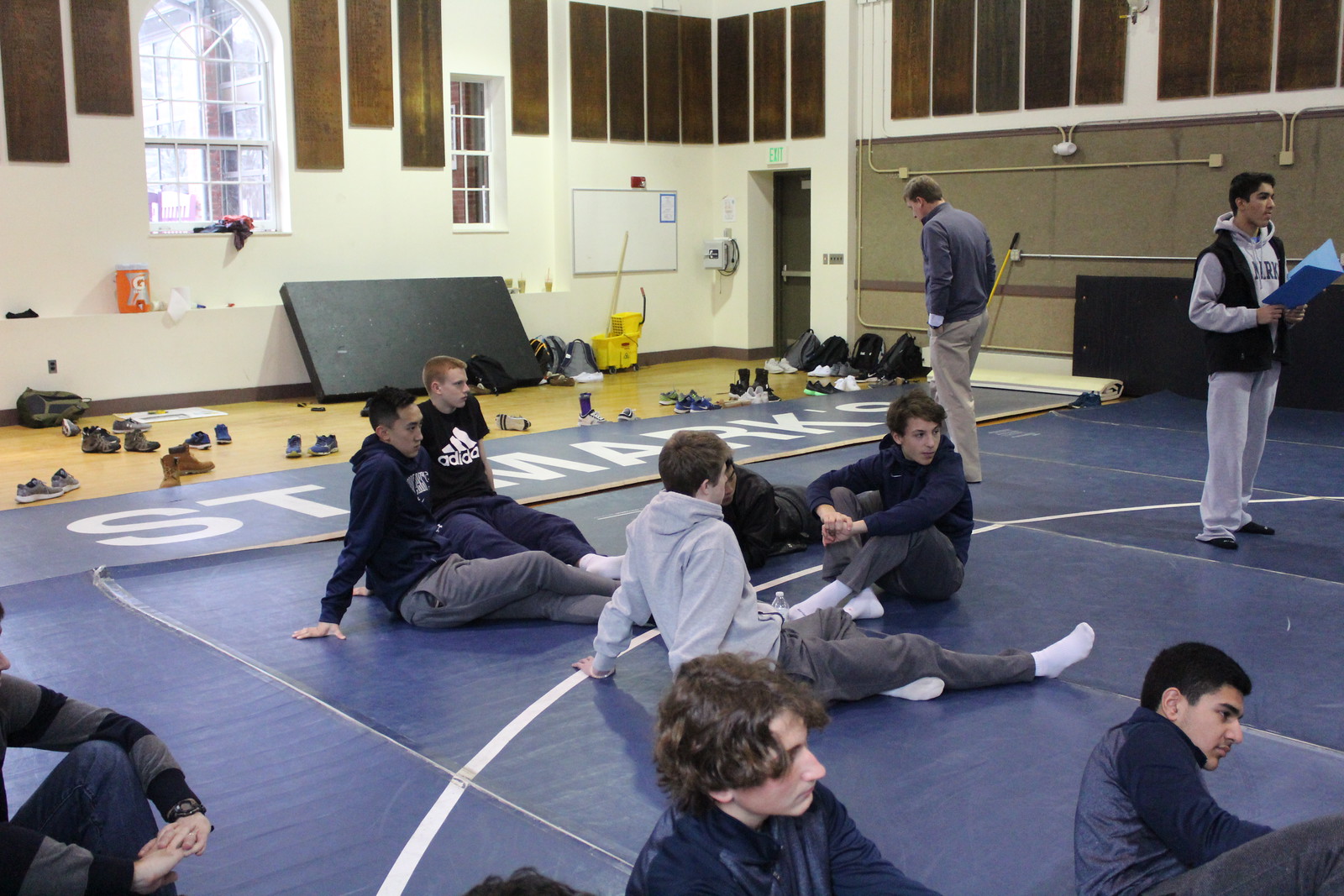by Cathy Zhou ‘21
It is never easy to transition into a new environment. St. Mark’s is a place as welcoming and supporting as it could be, there are definitely surprises as well as discomforts for new students. For third formers, high school could be a novel but stressful experience and as for new students coming as upperformers, a new school could be hard to fit in.
Gift Wichayamas, new IV Former
Q: How do you feel as a new senior?
A: Everything is new and a rush. I feel like I am a freshman most of the time except
when they call sixth former and faculty to leave first. There are so many things to learn: the American culture, the college application process, names to remember, and of course, my English is to be improved. The fact that everyone already knows each other for at least two years make me feel awkward joining a conversation sometimes.
Q: What's your favorite thing about St. Mark's?
A: I have two favorite things here so far. My first one is the schedule here. In Thailand,
I had eight blocks every weekday from 8 a.m. to 4 p.m, so having 6 classes and a free block at St. Mark’s is way better. However, the homework load here still hits me hard. Also, I love how supportive people are here at St. Mark’s. When people say “hi” or smile back at me, it lights up my day.
Q: What are you looking forward to in the school year?
A: I am looking forward to meeting new people, trying to speak up more, and getting into college. I also want to go watch games and join more activities. Generally, I want to do anything
that would make my first and last year here memorable!
Skylar Davis, new V Former
Q: How do you feel as a new junior?
A: Being a new fifth former is honestly a lot easier than I thought it would be. I was kind of worried, since two years of high school have already passed and there are only two year left, but everyone is really nice and inviting!
Q: What's your favorite thing about St. Mark's?
A: I really love the general environment, but especially the community. It is a very tight-knit community and I like the communal aspect rather than a more traditional school setting.
Q: What's your favorite dining hall food so far?
A: I love the sprinkle cookies! They're not sugary to the point of overpowering, but the sprinkles add the best touch.
Q: What are you looking forward to in the school year?
A: I'm really excited for neon, especially since people kept talking about it (haha), and Groton night!
Q: How do you feel about the orientation?
A: Orientation was absolutely exhausting, but it was also really great for a lot of reasons. I got lost so often during orientation that I've barely gotten lost during the school year! (I wish I was joking...) I also got to meet a lot of really cool people during orientation, outside of the stress of the classroom.
Lina Zhang, new IV Former
Several days ago, an old friend asked me how life was at my new school. Looking at her question, I had to pause and think for a bit. As a new sophomore, one of the first things that hit me as I walked in was the sheer size of the school. Driving up to the front circle, the expanse of the football and soccer fields had me wide-eyed and nervous. Walking through the buildings by the side of a student leader, I remember thinking that I would never find my way anywhere. Standing in line with my parents, I saw my peers for the first time. Some were calm, smiling easily as they received their orientation packets, striking up conversation with the person next to them; others glanced around with wary eyes, as scared as I was at the time. But with these two weeks, the initial fear and awe I held for St. Mark’s has transformed into something of fond annoyance. True, speed-walking from the dining hall to third floor STEM in five minutes is challenging, I still stop and ask for directions to the PFAC (until realising it was an entire building), and the location of the dorms in the Main Building remains a mystery.
I told her, life’s good, still hanging on; the people here are crazy—crazy nice, yes, but also plain crazy. From the blindfolding activity outside Ms. McBride’s window, to the random outbursts of songs in my Spanish class, life in general is always hectic and filled with surprise. Not usually a social person, I am continuously astonished by the amount of friends that I have made here, and how different they can be, while still being kind and truthful. I do not boast to know every single quirk of St. Mark’s, or to even have any idea of what midterm and final weeks must be like, but the campus is no longer overbearing or spacious. I look to the coming year with excitement.
Arden Williams, new III Former
Q: How do you feel about the orientation?
A: Orientation was very long.
Q: What's your favorite thing about St. Mark's?
A: Being a boarding student!
Michael Fisher, new III Former
Q: What's your favorite dining hall food so far?
A: The sandwiches.
Q: How do you feel as a new student?
A: I feel anxious as a new student.















